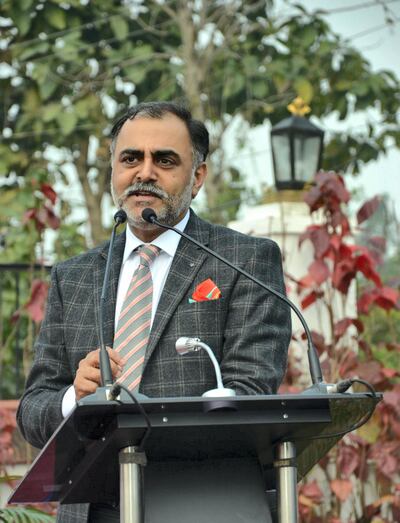Schoolchildren have had to resort to online learning in the Covid-19 pandemic but as recovery begins the focus is shifting to incorporating virtual education across teaching in ways that improve the classroom.
India-based educationalist Amreesh Chandra says his biggest concern when the world emerges from the pandemic is “the deficit in knowledge, especially in these ones that are graduating from one life into the other”.
Mr Chandra set up Chandra Edu Links in 2006, which has provided education services around the world. As the pandemic took hold, it launched what is thought to be India’s first live web school.
The Online World School in India was followed by Online Learning World, which aims to complement the education of Indian pupils in the GCC through live, interactive tutoring in the form of after-school lessons.
Mr Chandra said conventional schools modelled on traditional systems failed to adapt to the crisis.
“The most important thing that happened with the pandemic was, no matter how modern a country was or how developed the country was or how underdeveloped a country was, our education system was never structured enough to handle such a pressure point,” he said.
In the first peak of the outbreak, last spring, 188 countries closed their schools, affecting 1.54 billion pupils.
“My worry from the pandemic is how would these students perform when they go into their professional lives,” he said.
There needs to be a properly thought-out plan for how these gaps will be closed, he said.
Mr Chandra believes there should be a hybrid system that incorporates some online learning – but not of the type most children have become accustomed to in the past 10 months.
“We developed a programme where we would replicate what happens offline, online. So we said we’re not going to do any video tutorials. We will not make WhatsApp groups and pass instructions. We will not send worksheets for them to fill out,” Mr Chandra said.
“What we would do is create a conveyer belt of technology that allows a live-streaming of every class that is taught and allows a child to raise his hand or her hand and ask a question as he or she would in an offline class.”
Online Learning World has since created 15 live studios for teaching. The online idea was accelerated by the frustrations of parents who couldn’t justify the school fees they were paying and the angst felt by children whose education was suffering at such a crucial time.
“Not all schools are teaching through a live-streaming facility. If a child has a question, for him to go back to his subject teacher is an ordeal for him. Classroom teaching is based on questions and answers. We wanted to capture that live.”
Our future depends on young people.
— UNICEF (@UNICEF) November 20, 2020
As we face COVID-19, what will you do to reimagine a better world for every child? #WorldChildrensDay pic.twitter.com/VNdLQv6uC1
Online Learning World is one of the very few organisations in the UAE education sector to have received an online education trade licence from Fujairah Free Zone during the pandemic.
Moving forwards, Mr Chandra believes it will take two to three academic terms to make up for the educational losses sustained during the lockdown and says incorporating technology could help offset the negative impact of any future crises that would compel pupils to stay at home.
As he points, uncertainty still reigns over when children will be able to return to the classroom.
The most worrying issue, Mr Chandra says, is that many teachers lack sufficient technology skills and this needs to be addressed.
But he says shifting to a combination of in-class and online learning is a “no-brainer”.
“It has to be blended learning, which means it’s a combination of offline and online. We never know when there could be a sudden pandemic outburst in an institution.”






